Deer tracking is an indispensable skill for deer hunters and nature enthusiasts (including photographers) eager to catch a glimpse of one of these animals. But there’s a lot to learn about tracking a deer. Keep reading to find our in-depth guide to tracking deer.
Tracking methods vary depending on your aim in finding the deer. Let’s take a look at our in-depth guide to deer tracking for both leisure and hunting purposes.
Here’s an overview of what we’ll discuss:
- Tracking deer to locate and observe them
- Scouting deer tracks and signs
- How to track and trail deer
- Strategy: stealth and movement
- When to track deer
- Tracking and trailing a deer after a sighting
- Tips for deer photographers
- Tracking wounded deer after a shoot
- Bow-hunting and tracking wounded deer
- Grid searching
Tracking Deer to Locate and Observe Them
Though we’ll get into more details about tracking deer for hunting purposes later, it’s good to know some information about tracking deer for other purposes, such as photography.
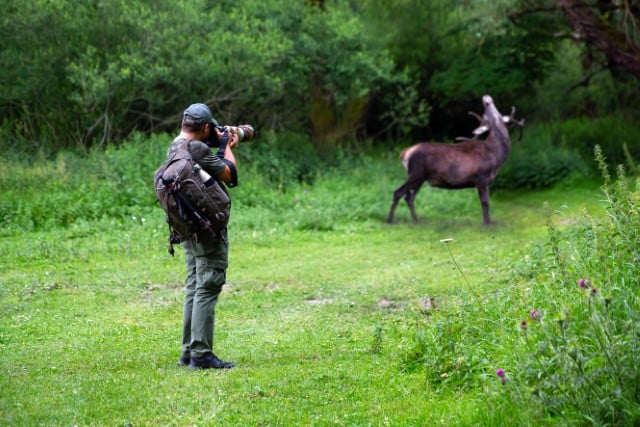
After all, whether you are tracking deer because you enjoy hunting or because you want to snap some good photos, your main goal is still to find deer in their natural habitat.
When tracking deer, there are multiple things to consider. These include:
- Scouting
- Tracking
- Strategy
- Timing
Though the specifics of these might vary by the season, the basics remain the same year-round.
The better you know your way around all of these aspects, the more likely you are to find deer. If you plan out each of these steps well, you’ll increase your chances of finding deer.
Scouting Deer Signs and Tracks
Let’s discuss some common deer signs that you can use for tracking deer.
Deer Droppings
You’ll probably see signs of a deer before you see the actual animal. Anyone who’s been on a walk through the woods where deer like to hang out is probably familiar with the most obvious sign of deer: deer droppings.
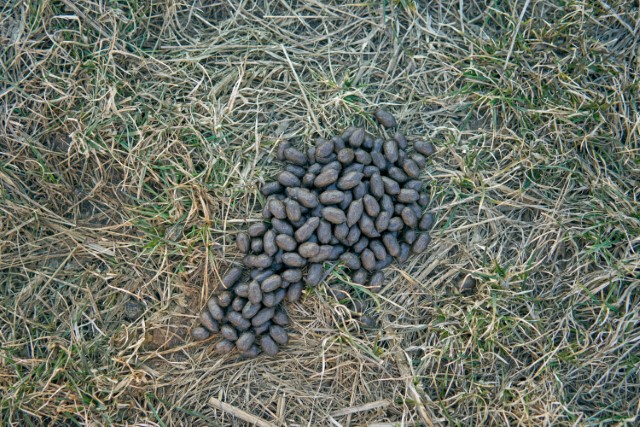
Deer droppings are distinguished by their oval shape and size. However, deer scat can sometimes have a less distinguishable shape.
The droppings of larger deer species like elk and moose can be easily mistaken for the droppings of other animals. However, if you’re in an area with lots of elk and moose, you’ll probably get used to recognizing it pretty quickly.
White-tailed deer scat can also be confused with rabbit droppings, but rabbit droppings are smaller and more circular than oval-shape.
Footprints
Deer footprints, known as tracks, can be easy to overlook for the untrained eye, but as soon as you’re used to seeing them, you’ll be able to start following them in no time.
Deer tracks are easily recognized by their shape. They look, unsurprisingly, like the bottom of a deer’s foot.
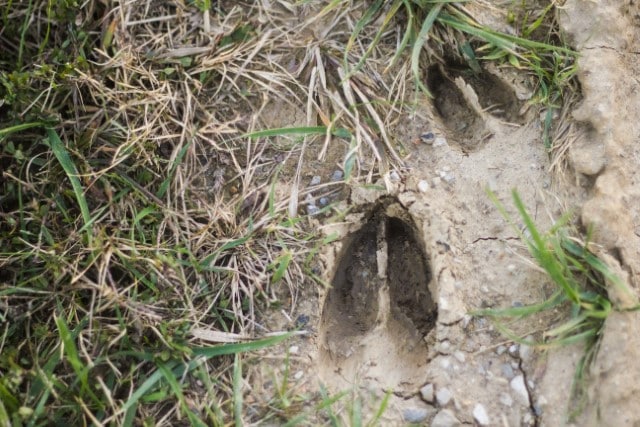
The things to keep in mind when looking for deer tracks include:
- the depth of the indentation in the ground
- the distance between the tracks
The indentation depth can vary depending on how moist the ground is and whether or not there is a lot of leaf coverage, so make sure to keep this in mind.
The distance between the tracks is impacted not only by the distance from one track to the next, but also by the deer’s body size.
You can get a reasonable estimate of the deer’s size by measuring the distance between the front and back tracks.
Keep in mind that deer sometimes jump from one step to the next, meaning their tracks could be farther spread apart than you would expect, so the speed of a deer makes a difference.
Bedding Signs
Deer often like to bed in the same place multiple times, so over time you’ll notice spots that are clearly deer beds.
Deer bedding spots are roughly the size of a deer when it’s lying down.
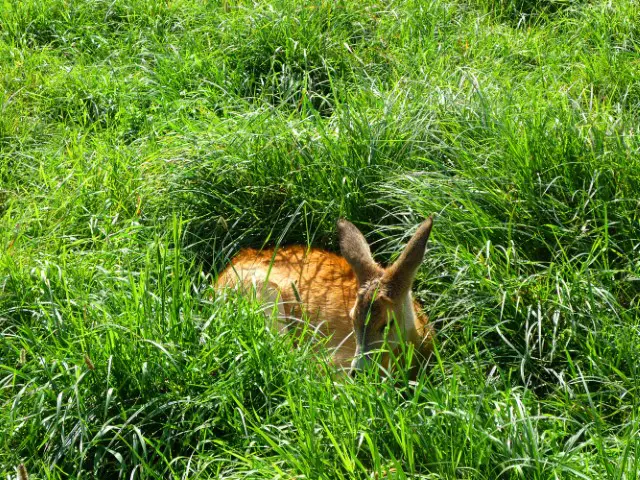
A deer bed’s size should be able to give you an idea of how large the deer is. It may also tell you whether the deer is a mother with her fawn.
Depending upon the season, deer tend to bed in places that provide them enough shelter, but they also like to have an easy escape route in case one of their natural predators sneaks up on them during the night.
If you think about where the safest place for a deer to sleep might be, you’re more likely to find signs of a deer bed.
Feeding Signs
Signs of feeding take a bit more experience to find, but if you’re familiar with a deer’s diet and know what time of year they tend to eat, this can be useful in finding deer.
Deer are herbivores, but they can and will eat a variety of different plants, so you can find signs of deer feeding in a wide variety of places.
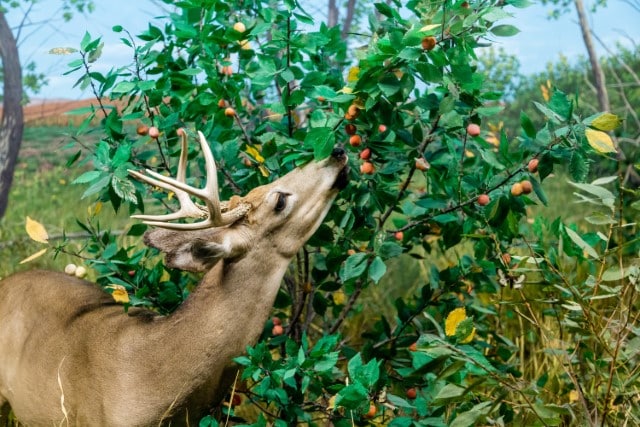
On larger plants, you can sometimes notice that the deer have bitten off parts of leaves and left behind jagged indentations.
Other times, you can tell that a deer has probably eaten from the same shrub or bush multiple times. In this case, the trunk will probably be fairly thick and have several small offshoots.
Of course, these signs can differ depending on the time of year, and the species of deer.
Tracking and Trailing the Deer
Once you have identified deer tracks, it’s important to think about a few things. If the deer tracks don’t appear to be fresh, the deer is unlikely to be nearby.
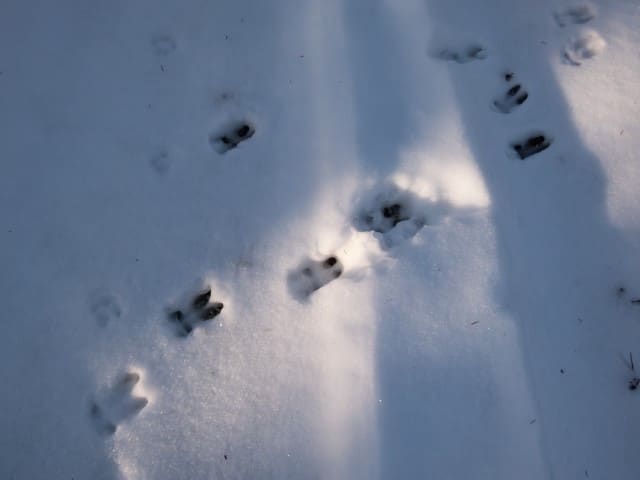
However, if the deer scat looks like it was recently dropped, there’s a strong chance you’re fairly close to finding your deer.
You also need to think about which direction the tracks are heading in. If you’ve found a more general sign of a deer, like bedding or evidence of feeding, tracking isn’t as easy as when you find footprints.
Look in the direction that the footprints are headed and then try and follow them. Keep your eyes out for other signs of deer activity as you do so.
Strategy: Stealth and Movement
Since we’ve already talked about scouting deer tracks and tracking the animal, you’ve probably thought of a good observation point.
At the end of the trail, you’ll want to find a spot where you can comfortably observe the deer from a quiet location. This is probably going to be close to where the deer feed in the morning.
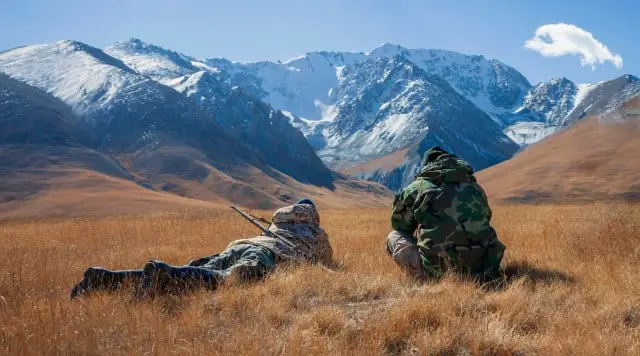
It’s best to come back to this location multiple times, and some hunters will set out food throughout the year to attract deer to the same location.
Most hunters will return to the same spot on a regular basis, even when they aren’t hunting, so that the deer will become more familiar with their smell.
Though having your observation point is important, you should also have an easy route to get there. You should plan the most efficient route to your spot so that you can get there causing as little disruption as possible.
It probably goes without saying that you’ll need to be quiet and make as few movements as possible the entire time you’re tracking the deer.
Deer hear much better than humans do, so even the slightest of movements such as a branch cracking can send them running away.
Your Clothes Matter
Think about what you should wear when you’re looking for deer.
If you’re just out to observe some deer, this may be less important. After all, you probably won’t be as disappointed if the deer runs off.
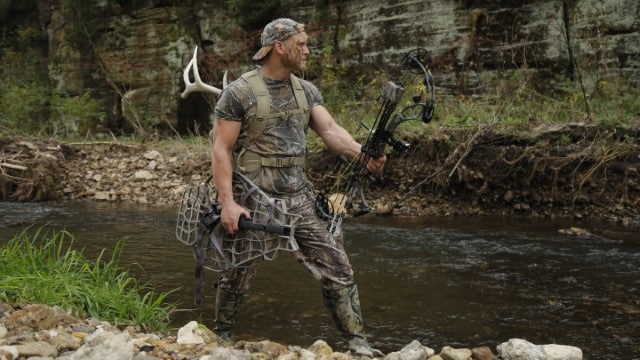
You probably also won’t want to go to the trouble of investing in expensive camouflage and boots unless you’re hunting, but it’s still useful to think about what can help you blend in.
Dark colors and camouflage will help you blend naturally into the forest. The more of your body you can cover, the better.
If you’re getting up early, you’ll probably want to cover up anyway since it will be so cold.
Covering up will also protect you from branches and insects. The last thing you want is scaring away a deer by slapping at a mosquito!
Always keep safety in mind when you’re hunting. Some areas require orange vests so that other hunters can see you better.
You shouldn’t worry about this interfering with your hunting since deer can’t distinguish colors as well as humans can. To a deer, an orange vest looks almost the same as camouflage.
Deer do, however, seem particularly sensitive to yellow, so wearing a bright neon shirt is probably not the best idea when you’re trying to blend in with the forest.
In general, a deer’s vision is more keen when it comes to movement than color.
When to Track Deer?
Deer tend to be most active during certain times of the day. Contrary to what you may have heard, deer are not nocturnal. They’re particularly active around dawn or dusk.
These animals are least active during the day, so this isn’t the best time to go out if you want to observe deer.
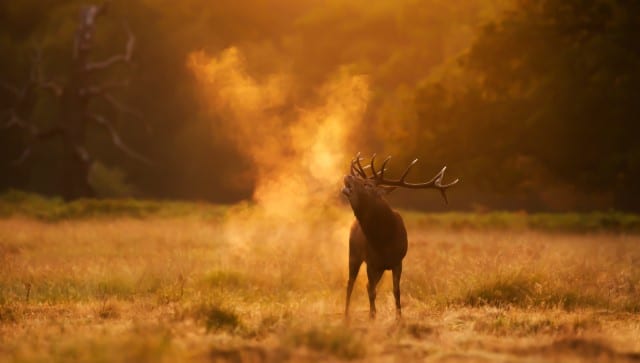
Since dawn and dusk change throughout the year, it’s a good idea to look up when these events will happen ahead of time.
Whatever time of day you’re going, you need to make sure to give yourself enough time to get to your position. You’re more likely to make noise and attract attention if you’re rushing.
The earlier you get going, the better. Set out early enough so you have enough time to settle in once you reach your position.
Deer have much sharper hearing than humans. They’re bound to notice if you fidget around.
It’s also important to keep in mind that, though deer are generally most active at dawn and dusk, their behavior may vary at different times of the year, and even with the weather.
Deer habits may differ during the mating season. Also, they have different eating habits in the summer and fall than in the winter.
There are also many different types of deer. Also, weather can affect deer movement habits.
The more you know about deer behavior and your specific location, the better you’ll be able to pick a good time to find them.
Tracking and Trailing a Deer After a Sighting
Most deer sightings are quite fleeting, and if the deer sees you, it will probably run away and you won’t see it again.
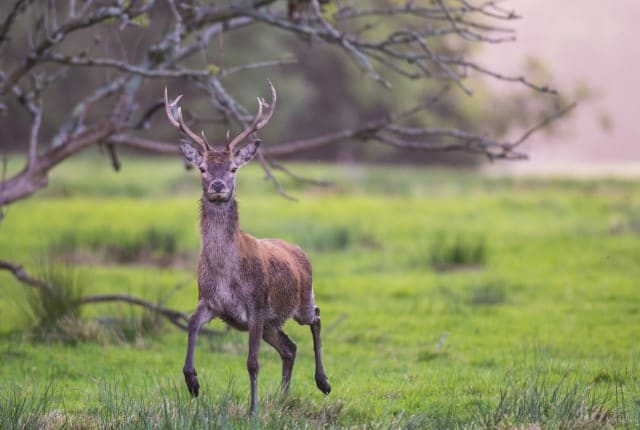
If you see a deer, think about when and where you saw the deer. It will probably go back to that same location at some point in the near future.
Additionally, many species of deer like to live in groups called herds, meaning that if you see one deer, there is probably another deer somewhere nearby. This is not the case for all deer, though. Some species, such as moose, prefer a more solitary life.
Using Technology
Satellite technology can be a huge help if you’re deer hunting in an unfamiliar area.
Websites like Google Earth or Maps can give you a bird’s eye view of an area. Local trails and maps can also be useful since they’re probably more detailed and may contain information from hunters or nature lovers.
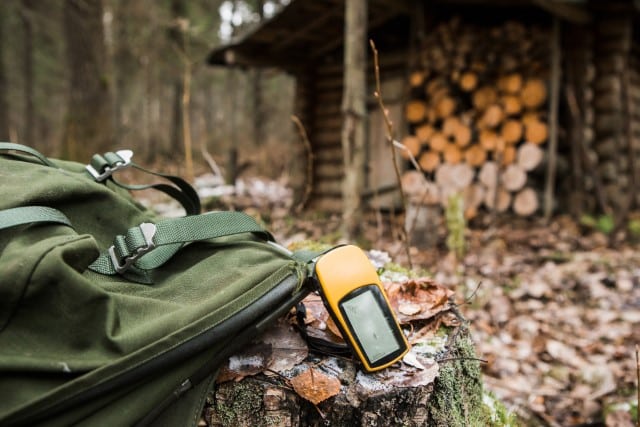
Technology isn’t going to do all the work for you. You’ll need to know some basic information about where deer like to hang out to be able to use it effectively.
Remember to think like a deer and consider where this animal would have the most resources and safest shelter options.
Deer like to hang out in the woods, but they also like to gather in meadows and hang around the edges of forests. They’re less likely to be in the central area of a forest, especially if the forested area is rather large.
Look for Lakes and Rivers
Looking for lakes and rivers will also give you some useful hints about where you’re likely to find deer.
Like all animals, deer need a regular source of water. That’s why you have a better chance of finding them wherever there is a source of fresh water.
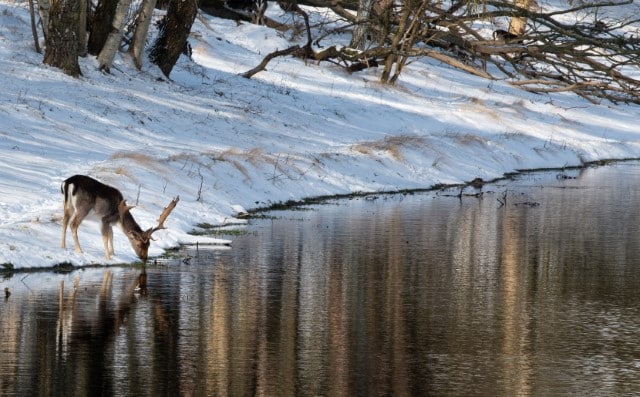
Keep in mind that during winter smaller bodies of water are likely to freeze over.
That is why deer tend to be more attracted to rivers and streams during that season. Moving water is less likely to freeze.
When looking at maps, you should also think about what type of deer you are trying to find.
Deer tend to be territorial. However, some deer have larger territories than others.
The areas where deer like to gather can change depending on the season.
During the mating and rutting season, for instance, deer will gather in larger, more open spaces than they would otherwise.
Tips for Deer Photographers
Regardless of your goal, the best way to find deer is to think like a deer. There are plenty of resources you can find on deer behavior on this website and elsewhere.
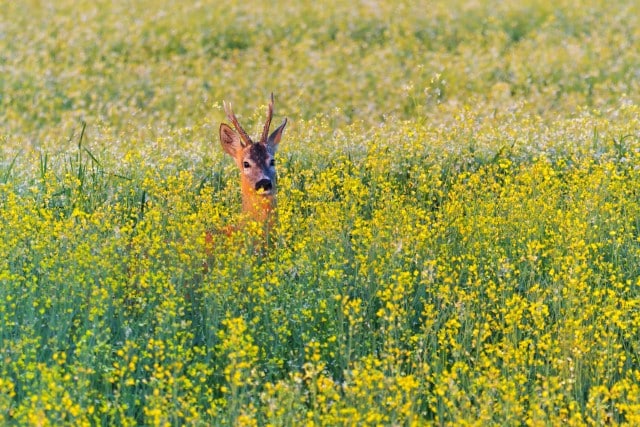
You’ll find local hunters and other wildlife enthusiasts to be fountains of information. Ask them for insight and knowledge on the area where you plan to work.
Are you going out looking for deer on a regular basis? It’s best to keep track of where you’ve been and assemble your notes.
For instance, keep a log of where you’ve seen deer tracks or the routes you’ve already explored for signs of deer.
For photographers, it might be a good idea to take pictures not only of the deer but also of your route and any other signs of deer.
This will help you keep a record of how the landscape can change from season to season and, though they might not be the prettiest photos, they’ll offer useful information to help you be more successful on your next outing.
If you’re hoping to hunt deer, there’s other information that you need to keep in mind when tracking.
Let’s take a look at information specific to deer hunting.
Tracking Wounded Deer After a Shot
Let’s go through what to do if you’re hunting and you’ve already taken a shot at the deer. Most hunters will try to drop a deer in its tracks with one shot, but if you’ve failed to do so it’s your obligation to recover the animal.
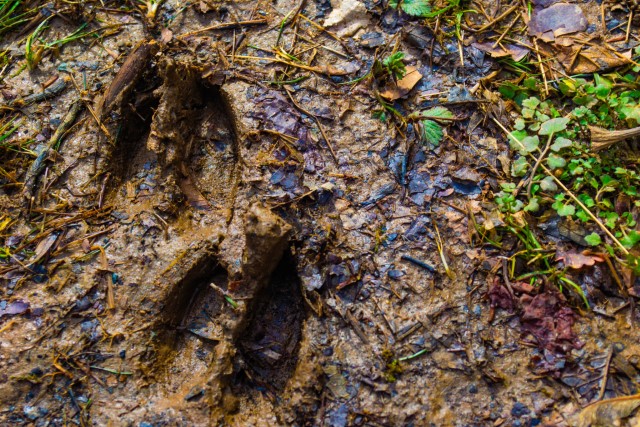
The deer being killed with a single shot is the best scenario. In that case, you’ll only have to worry about recovering the carcass.
However, it could be the case that you shoot the deer without killing it.
In this case, finding the deer becomes more complicated.
Following a Blood Trail
The most useful information will come from the deer’s blood. It should be easy to find and examine the blood if you’ve had a pretty good shot and the deer is bleeding quite a bit.
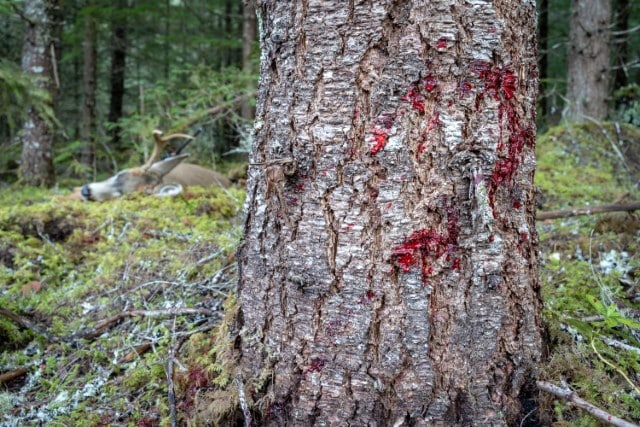
Sometimes the deer won’t die on contact and will try and escape before dying. If the blood looks pink and frothy, it probably means that you’ve hit both the lungs and that it’s safe to go collect the deer.
If there’s only a bit of blood, it probably means that the hit wasn’t severe or that you only grazed the animal. Going in for another shot will be more difficult in this case.
A deer can be seriously injured without bleeding significantly. Don’t assume that the deer has survived or wasn’t seriously injured just because you don’t see a lot of blood.
You Must Find the Deer
This is why it’s important to follow up on your shot even if you don’t see much blood.
If you don’t see blood, don’t give up too quickly.
In many cases, deer can cover long distances after they’ve been shot. In many cases, they can travel for several hundred yards before dying from their wound.
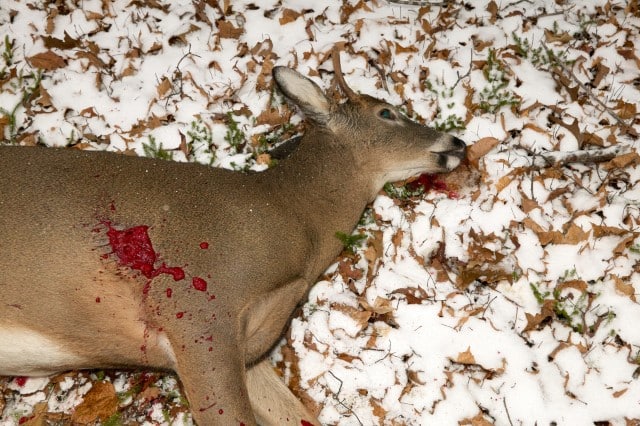
Another tip for tracking a blood trail is to think about the deer’s height. This can indicate where you’ve hit the deer if you’re following blood that has been smeared along trees or bushes.
For example, an average white-tailed deer is about 36 inches tall at the shoulder. If the trail is about thirty inches above the ground, it means you’ve probably missed the lungs and not taken a kill shot.
This is why it’s important to understand deer anatomy and know where you should be aiming.
It’s better to be safe than sorry and ensure that you’ve tracked the deer all the way to the end. Leaving a deer out to die or leaving its body behind is considered unethical among hunters.
Bow-Hunting and Tracking Wounded Deer
Generally, hitting a deer with a bullet is considered the most humane way to kill a deer since it will die more quickly than if you shoot it with an arrow.
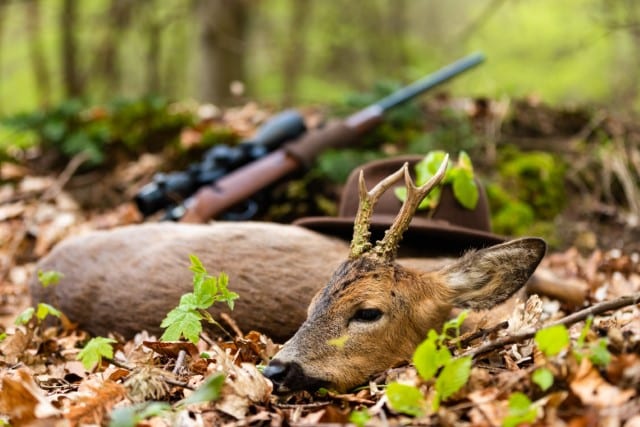
However, many hunters prefer bow hunting because of the challenge. Some hunters feel it gives you less of an advantage over the deer, making it more fair than using a gun.
Whatever your reasoning for choosing bow hunting, there are a few extra things you’ll need to know about arrows and blood tracking.
During bow hunting season, looking for arrows is an important part of tracking a deer after you’ve shot it. Shooting a deer with a bow is trickier than with a gun and takes more skill.
It’s more likely going to take more than one shot, and you may have to track the deer for a second shot.
You Must Retrieve the Arrow
Once you’ve taken your shot, you’ll need to retrieve the arrow even if the deer hasn’t run off. This is an important safety measure.
Arrows don’t belong in the woods and could be dangerous for other animals or even people who happen to be wandering around.
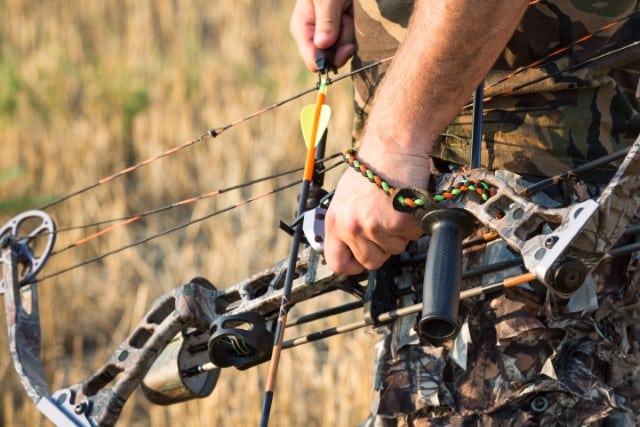
It’s unlikely that you’ve hit the deer if there’s no blood on the arrow. If this is the case, your chance of successfully tracking the deer for a kill shot is fairly low. After all, the deer knows that you’re in the area and has probably taken off sprinting.
When you’re hunting with a bow, you don’t want to aim exactly for the shoulder. Instead, aim for the lungs and will hope that the arrow travels cleanly through both lungs.
If you hit the deer somewhere else, you’ll only injure the animal, and it will be harder to track the deer down for a kill shot.
If you’ve had a good shot through both of the deer’s lungs, the arrow will have gone straight through the deer and will end up on the surface of the ground or lodged slightly into the ground.
The arrow will then have pink, foamy blood that indicates a clean shot that has probably taken out the deer.
If you think you’ve hit the deer but haven’t managed to do a double lung shot, it’s best to wait a little while before following the blood trail.
If you’ve only hit one lung, the deer will probably expire, but it could take a few hours.
When this is the case, it’s best to wait so that other hunters can still use the area. Once you’ve started the recovery process, other deer will flee the area, meaning no one else will be able to get a kill shot that day.
Grid Searching
If you have no luck following the blood trail, you’ll have to do a grid search. In order to do this, everyone on your team must be fairly familiar with the recovery area.
That way, you can split the landscape up into grids for everyone to search.
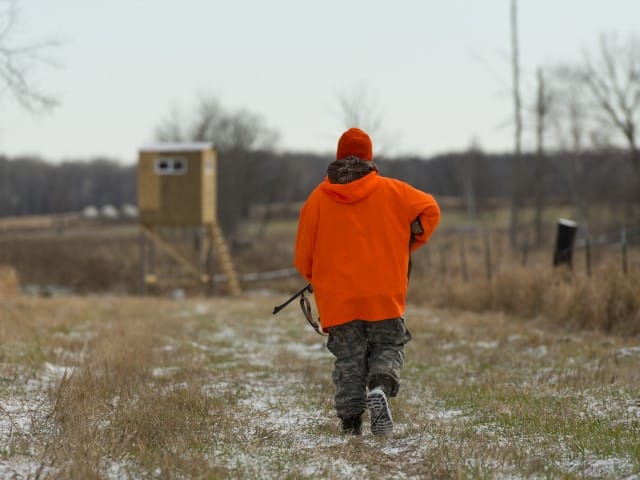
It’s important that you don’t leave any area left unchecked so that you aren’t leaving the deer’s body behind. It might seem tedious and boring, but it’s part of the hunting process.
When you start a grid search, everyone will walk in a straight line over the grid to make sure that nothing is overlooked.
It’s important to keep your eyes and ears open in all directions and think about where the deer probably fled.
When you look for the deer, concentrate on low-ground areas. Deer tend to head to lower ground when they’re injured. Going uphill requires more energy.
However, you shouldn’t take anything for granted.
Deer are stronger and smarter than you might think. Check in spots where you think it would be almost impossible for a wounded deer to reach.
Frequently Asked Questions About Deer Tracking
What Equipment is Essential for Deer Tracking?
Besides basic hunting gear, a good pair of binoculars, a GPS or compass, and appropriate clothing for the weather are essential. Also, consider a deer tracking dog if legal in your area.
Are There Legal Considerations to Keep in Mind While Tracking Deer?
Yes, always be aware of local hunting laws, which can include specific hunting seasons, licensing requirements, and areas where hunting is permitted. It’s crucial to stay informed and compliant with these regulations.
How Do Environmental Conditions Affect Deer Behavior and Tracking?
Weather conditions can significantly impact deer behavior. For example, deer may become more active after a rainstorm, as it washes away their scent, making them feel safer. Snow can both aid and hinder tracking by making tracks more visible but also more challenging to navigate in.
What Safety Precautions Should Be Taken During Deer Tracking?
Wear appropriate safety gear, such as blaze orange during hunting season to be visible to other hunters. Also, be aware of your surroundings to avoid getting lost, and always inform someone of your tracking location and expected return time.
What Impact Does Human Activity Have on Deer Movement Patterns?
Human activities, such as urban development, forestry, and agricultural practices, can alter deer habitats and movement patterns. Understanding these impacts can be crucial for effective tracking, especially in areas close to human settlements.
How Important is Physical Fitness in Deer Tracking?
Good physical fitness is essential, especially when tracking in rough terrain or over long distances. Stamina and strength can significantly enhance your tracking experience and success.
Final Thoughts on Tracking Deer
Deer tracking can be thrilling, and it’s especially exciting to find a deer in the wild for the first time. However, it takes lots of practice to master this skill.
Even the most experienced hunters will have unsuccessful trips. So, you shouldn’t be discouraged if you don’t spot any deer on your first few trips.

